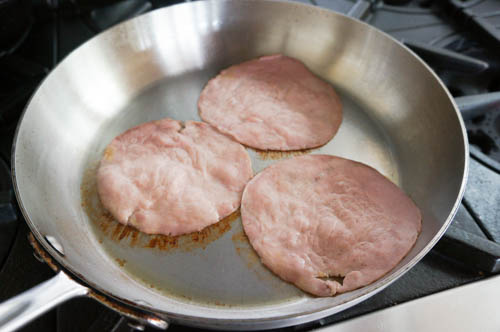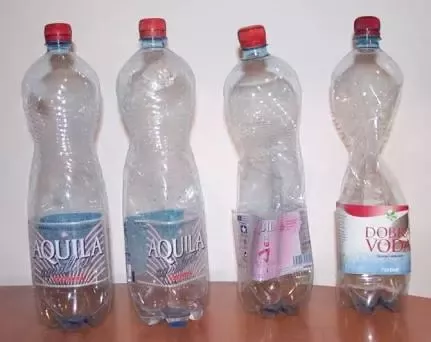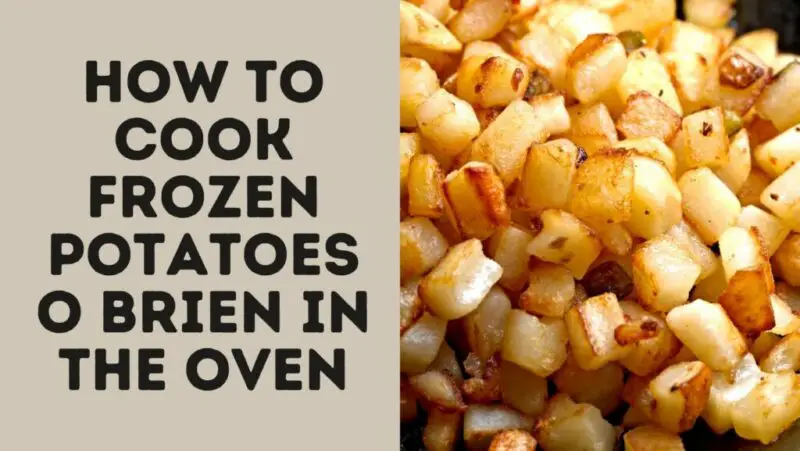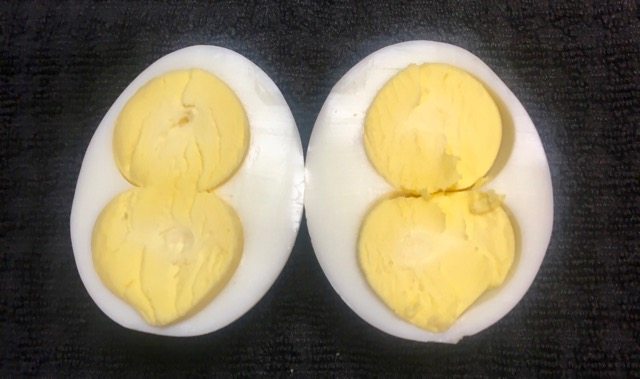Welcome to our article on cryovac cooked meat and its shelf life. If you’re interested in food preservation and ensuring your cooked meat lasts as long as possible, you’re in the right place. We will explore the duration of how long cryovac cooked meat can last and provide you with valuable insights on optimizing your food storage practices.
Key Takeaways:
- Cryovac is a popular method used to preserve cooked meat, extending its shelf life significantly.
- Understanding cryovac packaging, which involves vacuum-sealing meat, is essential for preserving cooked meat.
- Factors such as temperature, storage conditions, and the quality of the meat can influence the shelf life of cryovac cooked meat.
- Recommended storage time for cryovac cooked meat in the refrigerator is 1-2 weeks, but always check for signs of spoilage before consuming.
- Freezing cryovac cooked meat can further extend its shelf life to 3-4 months, but it’s important to thaw it properly before consumption.
Understanding Cryovac
Cryovac is a widely used method for preserving cooked meat, and it involves vacuum-sealing the food in airtight plastic packaging. This technique effectively removes oxygen from the packaging, which helps slow down the growth of bacteria and microorganisms, thereby extending the shelf life of the cooked meat. The vacuum-sealed cryovac packaging creates a barrier that prevents spoilage and maintains the quality of the meat for a longer period.
When food is cryovaced, it is subjected to a vacuum-sealing process that eliminates air from the packaging. This absence of oxygen slows down the microbial growth that causes food spoilage. By removing oxygen, cryovac packaging inhibits the oxidation process, which is responsible for the deterioration of flavors, colors, and textures of the cooked meat. As a result, cryovac cooked meat can retain its taste, tenderness, and appearance for an extended period.
Cryovac packaging is widely used by food manufacturers, retailers, and even households to preserve and store cooked meat. It provides a convenient and efficient way to maintain the quality and longevity of the meat. Whether you’re a professional chef or an everyday consumer, understanding cryovac and its benefits can help you make informed decisions about food preservation and optimize your storage practices.
Factors Influencing Cryovac Cooked Meat Shelf Life
When it comes to the shelf life of cryovac cooked meat, several factors play a crucial role. The temperature at which the meat is stored can greatly impact its longevity. It is recommended to store cryovac cooked meat at temperatures below 40°F (4°C) to slow down bacterial growth and preserve its quality. Higher temperatures can accelerate spoilage, reducing the shelf life of the meat.
Another factor to consider is the overall quality of the meat before cryovac packaging. Choosing fresh, high-quality meat ensures that you start with a product that has a longer shelf life. It is essential to source your meat from reputable suppliers to ensure its freshness and avoid any pre-existing bacteria or contamination.
Proper storage conditions also play a significant role in preserving the quality and safety of cryovac cooked meat. Ensure that the packaging is intact and airtight to prevent the entry of air and moisture, as these can lead to bacterial growth and spoilage. Additionally, storing the meat in a clean and organized refrigerator or freezer, away from other strong-smelling foods, can help maintain its flavor and prevent cross-contamination.
Key Factors Influencing Cryovac Cooked Meat Shelf Life:
- Temperature: Store below 40°F (4°C) to slow bacterial growth.
- Quality of Meat: Start with fresh, high-quality meat for longer shelf life.
- Storage Conditions: Keep cryovac packaging intact and store in a clean refrigerator or freezer.
| Factor | Optimal Range |
|---|---|
| Temperature | Below 40°F (4°C) |
| Quality of Meat | Fresh and high-quality |
| Storage Conditions | Airtight cryovac packaging, clean refrigerator or freezer |
By considering these factors and following proper storage practices, you can maximize the shelf life of cryovac cooked meat and ensure its safety for consumption.
Recommended Storage Time for Cryovac Cooked Meat
When it comes to storing cryovac cooked meat, it’s important to follow recommended guidelines to ensure food safety. According to experts, cryovac cooked meat can typically be stored for 1-2 weeks in the refrigerator. However, it’s crucial to keep the temperature below 40°F (4°C) to inhibit bacterial growth and maintain the quality of the meat.
Before consuming cryovac cooked meat, it’s essential to check for any signs of spoilage. If the meat appears discolored, has mold growth, or feels unusually slimy, it is best to discard it to avoid the risk of foodborne illness. Additionally, if the meat emits a foul odor or has an off smell, it is a clear indication that it has gone bad.
Proper storage and handling can help maximize the shelf life of cryovac cooked meat. Make sure to store the meat in airtight cryovac packaging and keep it refrigerated at all times. It’s also advisable to label the package with the date of storage to track its freshness. By following these guidelines, you can ensure the longevity and safety of your cryovac cooked meat.
| Storage Time | Temperature | Quality Check |
|---|---|---|
| 1-2 weeks | Below 40°F (4°C) | Check for signs of spoilage |
Freezing Cryovac Cooked Meat
If you want to extend the shelf life of your cryovac cooked meat even further, freezing it is a great option. By properly sealing the meat in cryovac packaging and storing it in a freezer set at 0°F (-18°C), you can enjoy your cooked meat for up to 3-4 months. Freezing not only preserves the meat but also helps maintain its quality and taste.
When freezing cryovac cooked meat, it’s important to follow proper thawing techniques to ensure food safety. Thawing the meat in the refrigerator is the best method, allowing it to gradually reach a safe temperature. If you need to thaw the meat quickly, you can use the defrost setting in a microwave, but be sure to cook it immediately afterward. Avoid thawing cryovac cooked meat at room temperature, as it can promote bacterial growth.
By freezing your cryovac cooked meat, you can have a convenient and ready-to-eat meal option available for an extended period. Just remember to label the packaging with the date it was frozen to keep track of its storage duration. Proper storage and thawing practices will ensure that your frozen cryovac cooked meat remains safe and delicious.
Proper Thawing Techniques
Thawing cryovac cooked meat correctly is essential to ensure food safety. There are recommended methods that we should follow to minimize the risk of bacterial growth and maintain the quality of the meat. Here are some guidelines for thawing cryovac cooked meat:
- Refrigerator thawing: The best and safest method is to thaw the meat in the refrigerator. Simply transfer the cryovac packaged meat from the freezer to the refrigerator and allow it to thaw slowly over time. This gradual thawing process helps maintain the meat’s texture and minimizes bacterial growth. It’s important to place the meat on a plate or in a container to catch any potential drips and prevent cross-contamination.
- Microwave thawing: If you need to thaw the meat quickly, you can use the defrost setting on your microwave. Be sure to follow the manufacturer’s instructions for defrosting meat. However, it’s crucial to cook the meat immediately after thawing to ensure it reaches the proper internal temperature and kill any bacteria that may have started to grow.
- Avoid room temperature thawing: Thawing cryovac cooked meat at room temperature is not recommended as it allows bacteria to multiply rapidly. The outer layers of the meat may reach the danger zone (40°F to 140°F) where bacteria can thrive while the inner part remains frozen. This uneven thawing can lead to foodborne illnesses. Therefore, it’s best to avoid thawing cryovac cooked meat at room temperature.
By following these recommended thawing methods, we can ensure the safety of our cryovac cooked meat and minimize the risk of foodborne illnesses.
| Thawing Method | Advantages | Disadvantages |
|---|---|---|
| Refrigerator Thawing | – Safest method – Maintains meat’s texture – Minimizes bacterial growth | – Takes longer |
| Microwave Thawing | – Quick thawing option – Convenient | – Must cook immediately after thawing – May affect meat’s texture |
| Avoid Room Temperature Thawing | – Prevents bacterial growth | – Uneven thawing – Increased risk of foodborne illness |
Signs of Spoiled Cryovac Cooked Meat
When it comes to cryovac cooked meat, it’s crucial to be aware of the signs of spoilage. Properly identifying spoiled meat is essential for maintaining food safety and avoiding the risk of foodborne illness. Here are some visual and olfactory indicators to look out for:
Visual Indicators:
- Discoloration: If the cooked meat appears unusually brown, gray, or has patches of green or yellow, it may be a sign of spoilage.
- Mold Growth: The presence of mold on the surface of the meat indicates spoilage and should be avoided.
- Unusual Sliminess: If the meat feels excessively slimy or sticky to the touch, it may be an indication that it has gone bad.
Olfactory Indicators:
- Foul Odor: Pay attention to any foul or off smells emanating from the cooked meat. A strong, unpleasant odor is a clear indication that the meat is spoiled and should not be consumed.
It’s important to remember that cryovac packaging can help extend the shelf life of cooked meat, but it is not foolproof. If you notice any of these signs of spoilage, it’s recommended to discard the meat rather than risk consuming it. Prioritizing food safety is crucial, and understanding the signs of spoiled cryovac cooked meat is an important step in ensuring the well-being of you and your family.
| Visual Indicators | Olfactory Indicators |
|---|---|
| Discoloration: Unusual brown, gray, green, or yellow patches | Foul Odor: Strong, unpleasant smell |
| Mold Growth: Presence of mold on the surface | |
| Unusual Sliminess: Excessive sliminess or stickiness |
Safe Handling and Consumption Practices
When it comes to enjoying cryovac cooked meat safely, it is crucial to prioritize proper food handling and consumption practices. By following the recommended guidelines, you can minimize the risk of foodborne illnesses and ensure the utmost safety for yourself and your loved ones.
First and foremost, always remember to wash your hands thoroughly with soap and water before and after handling cooked meat. This simple yet effective step helps eliminate any potential bacteria or contaminants that might be present on your hands.
Additionally, it is essential to use separate utensils, cutting boards, and plates for raw and cooked meat. This practice prevents cross-contamination, where harmful bacteria from raw meat can transfer to cooked meat, leading to food poisoning. By keeping raw and cooked meat separate, you maintain a hygienic environment in your kitchen.
When consuming cryovac cooked meat, it is advisable to reheat it thoroughly to kill any potential bacteria that may have developed during storage. Ensure the internal temperature of the meat reaches at least 165°F (74°C) to guarantee its safety. You can use a food thermometer to accurately measure the temperature and achieve proper reheating.
By following these safe food handling and consumption practices, you can confidently enjoy cryovac cooked meat without compromising your health and well-being. Prioritizing food safety guidelines ensures that every bite is not only delicious but also free from any potential risks.
FAQ
Q: How long can cryovac cooked meat last?
A: Cryovac cooked meat can typically be stored for 1-2 weeks in the refrigerator at temperatures below 40°F (4°C).
Q: Can cryovac cooked meat be frozen?
A: Yes, when properly sealed in cryovac packaging and stored in a freezer set at 0°F (-18°C), cooked meat can last for up to 3-4 months.
Q: How should cryovac cooked meat be thawed?
A: The best method is to thaw the meat in the refrigerator. For quicker thawing, you can use the defrost setting in a microwave, but it’s important to cook the meat immediately afterward. Avoid thawing cryovac cooked meat at room temperature.
Q: What are the signs of spoiled cryovac cooked meat?
A: Visual indicators of spoiled cryovac cooked meat include discoloration, mold growth, or unusual sliminess. Additionally, a foul odor or off smell is a clear indication that the meat has gone bad.
Q: How should cryovac cooked meat be handled and consumed safely?
A: It’s important to wash your hands before and after handling the meat, use separate utensils and cutting boards for raw and cooked meat, and thoroughly reheat the cooked meat before consuming.




